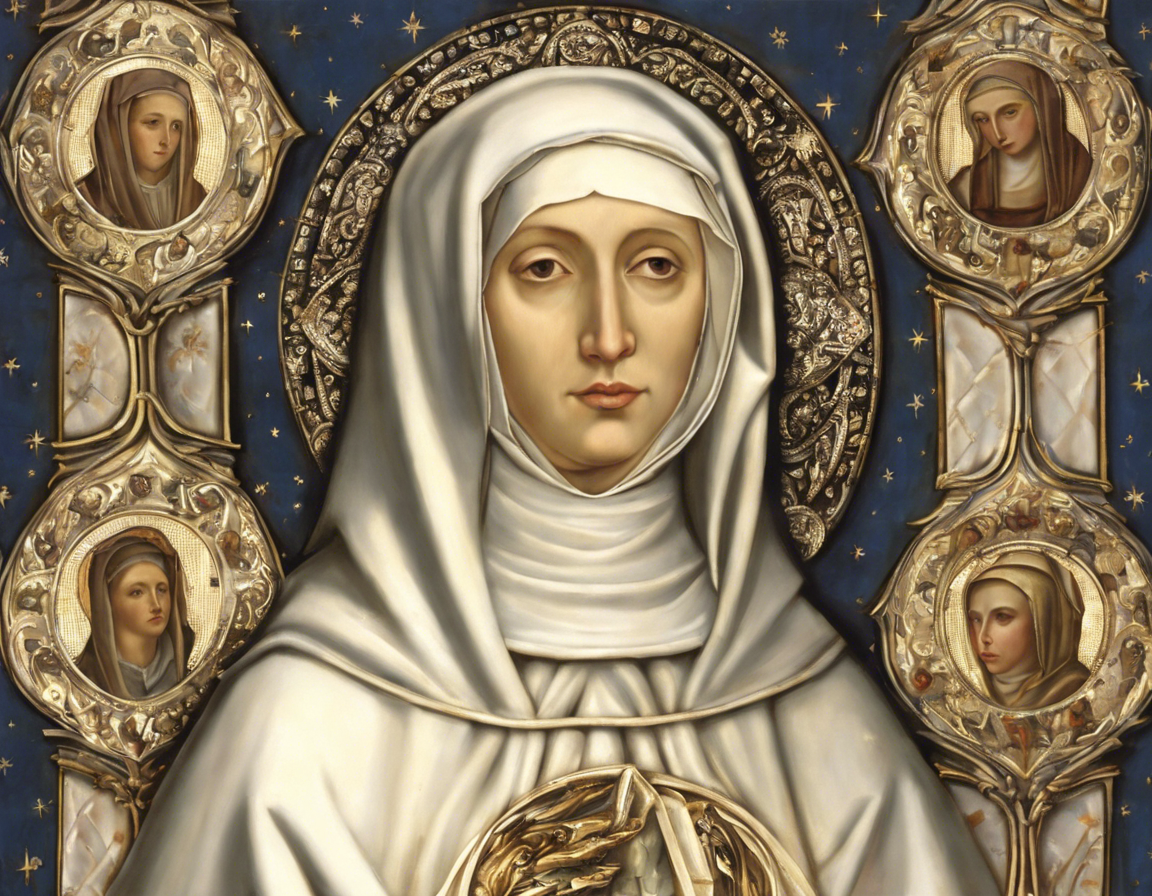
The Life and Legacy of St. Catherine of Siena
Introduction
St. Catherine of Siena, also known as Catherine Benincasa, was an influential figure in the Catholic Church during the 14th century. Born in Siena, Italy, in 1347, Catherine made significant contributions to theology, mysticism, and politics during her relatively short life. This article will explore the life and legacy of this remarkable saint, highlighting her spiritual journey, writings, and lasting impact on the Church and society.
Early Life and Spiritual Awakening
Catherine was born into a large family in Siena, the youngest of twenty-five children. From a young age, she showed a deep devotion to God and a strong sense of compassion for the poor and sick in her community. At the age of six, Catherine claimed to have experienced a mystical encounter with Jesus, which she described as a “mystical marriage” that marked the beginning of her spiritual journey.
Mystical Experiences and Devotion
Throughout her life, Catherine reported a series of mystical experiences, including visions, ecstasies, and conversations with God. These experiences deepened her faith and guided her actions as she worked tirelessly to serve the poor and marginalized. Catherine’s intense devotion to God and her unwavering commitment to prayer and contemplation earned her a reputation as a mystic and a spiritual leader.
Political Activism and Influence
In addition to her spiritual activities, Catherine also played a significant role in the political landscape of her time. She was known for her letters to popes, kings, and political leaders, urging them to seek peace, justice, and reconciliation. Catherine’s influence extended beyond religious matters, as she used her voice to advocate for social reform and political stability in a tumultuous era marked by war and conflict.
Writings and Theological Legacy
One of Catherine’s most enduring contributions is her writings, which include letters, prayers, and The Dialogue, a treatise on divine providence and human salvation. Her theological works reflect her deep faith, her mystical experiences, and her profound understanding of divine love and suffering. Catherine’s teachings continue to inspire theologians, scholars, and spiritual seekers to this day.
Canonization and Patronage
After her death in 1380 at the age of thirty-three, Catherine was canonized as a saint by the Catholic Church. She is the patron saint of Italy, Europe, and firefighters, among others. Her feast day is celebrated on April 29th each year, commemorating her life and legacy of faith, compassion, and service.
Impact and Influence
The life and legacy of St. Catherine of Siena have left an indelible mark on the history of the Catholic Church and Western spirituality. Her example of holiness, courage, and compassion continues to inspire men and women of faith to follow in her footsteps and to seek a deeper relationship with God.
Conclusion
In conclusion, St. Catherine of Siena remains a powerful and influential figure in the history of Christianity. Her life of faith, service, and devotion to God serves as a model for all who seek to live out their beliefs in a world in need of hope and healing. By studying her writings, teachings, and example, we can learn valuable lessons about divine love, suffering, and the pursuit of holiness. St. Catherine’s legacy endures as a testament to the transformative power of faith and the enduring impact of a life lived in service to others.
Frequently Asked Questions (FAQs)
- Was St. Catherine of Siena a nun?
-
No, St. Catherine was a laywoman who dedicated her life to serving God and others without taking formal religious vows.
-
What is St. Catherine of Siena known for?
-
St. Catherine is known for her mystical experiences, her writings on theology and spirituality, and her advocacy for peace and justice.
-
Why is St. Catherine of Siena a patron saint of Italy?
-
St. Catherine is the patron saint of Italy because of her deep love for her country and her efforts to bring about reconciliation and unity during times of conflict.
-
What is The Dialogue by St. Catherine of Siena?
-
The Dialogue is a book written by St. Catherine that documents her conversations with God on topics such as divine providence and the soul’s journey to salvation.
-
How did St. Catherine of Siena die?
-
St. Catherine died in 1380 at the age of thirty-three, reportedly from a stroke or other mysterious illness.
-
What lessons can we learn from the life of St. Catherine of Siena?
-
St. Catherine’s life teaches us the importance of faith, compassion, and service to others, as well as the transformative power of a deep relationship with God.
-
Is St. Catherine of Siena considered a Doctor of the Church?
-
Yes, St. Catherine was declared a Doctor of the Church by Pope Paul VI in 1970, recognizing her significant contributions to theology and spirituality.
-
How can we honor St. Catherine of Siena today?
-
We can honor St. Catherine by emulating her example of faith, service, and love for God and others, as well as by studying her writings and teachings.
-
What can we learn from St. Catherine’s teachings on suffering?
-
St. Catherine’s teachings on suffering remind us that God can bring good out of our hardships and that we can find strength and grace in times of trial.
-
Why is St. Catherine of Siena considered a mystic?
- St. Catherine is considered a mystic because of her reported mystical experiences, visions, and conversations with God that deepened her faith and informed her spiritual teachings.


